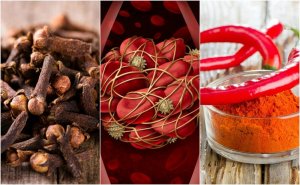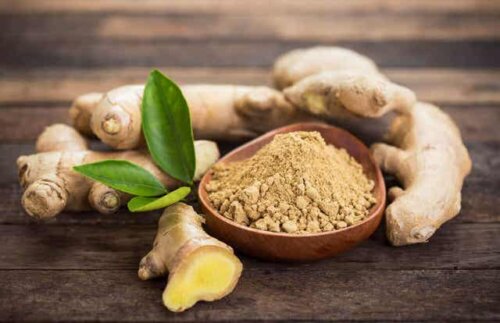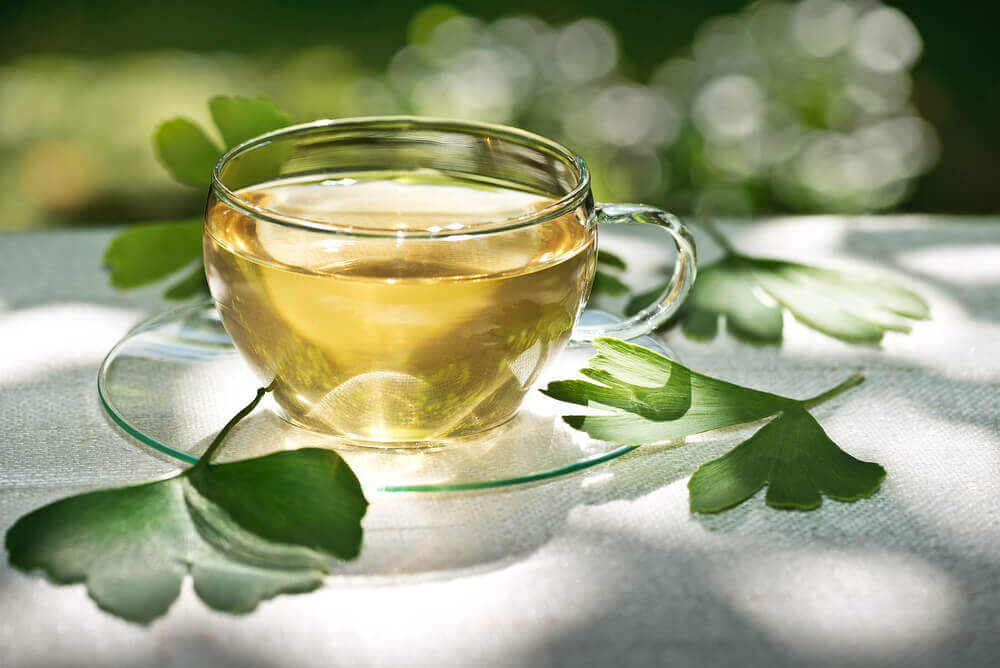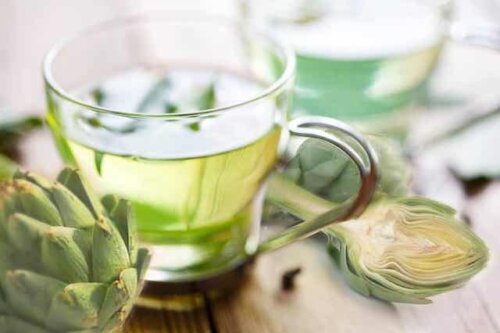Nine Natural Treatments for Blood Clots

There are several ingredients believed to be useful as natural blood clot treatments. Read on if you’re interested in finding out about them.
A blood clot is a mass that forms by platelets or red blood cells clumping together when a blood vessel is damaged or ruptured.
Coagulation is a normal process in the body that prevents excessive blood loss in cases of hemorrhage. However, it can be quite dangerous when it occurs inside healthy vessels, or when the clot doesn’t dissolve once its fulfilled its function.
This triggers an interruption or blockage in blood flow which increases the risk of complications and serious damage to body tissue and organs.
What to do when a blood clot is diagnosed?
According to experts at The Centers for Disease Control and Prevention (CDC), when a person has a blood clot (venous thromboembolism), their doctor may prescribe blood-thinning medication.
“These reduce the risk of the clot getting bigger, so the body can slowly reabsorb it, and reduce the risk of more clots forming.”
Additionally, the doctor may recommend changing some lifestyle habits so the patient can get better in the shortest time possible.
Therefore, a healthy lifestyle and, above all, a healthy diet can benefit the body in many ways.
As a complement to the diet, there are some natural ingredients that, due to their composition, can help dissolve blood clots.
1. Ginger for treating blood clots

Ginger contains vitamins, minerals, and antioxidants that help thin the blood and stop the formation of clots. This root is also known for stimulating blood flow. Furthermore, its components help maintain the elasticity of the arteries.
Ingredients
- 1 tsp. of grated ginger (5 g).
- 1 cup of water (100 ml).
Method
- Boil the water and add the ginger.
- Cover and let it stand for 10 minutes.
- Drink in moderation.
- Don’t drink more than three cups a day.
2. Cloves
According to some hypotheses, cloves contain large quantities of polyphenols, which are anticoagulant substances that help maintain good circulation. These antioxidants, in addition to vitamins and minerals, avoid the build-up of lipids and toxins in the bloodstream which prevents blood clots.
Ingredients
- ½ tsp. of cloves (2.5 g).
- 1 cup of water (1oo ml).
Method
- Heat the water, add the cloves, and cover.
- Let it cool for 10 minutes then strain.
- Drink up to two cups a day.
You might also be interested in: Four Natural Ways to Stimulate Blood Flow in Your Body
3. Ginkgo biloba

It’s thought that the leaves from the ginkgo biloba plant have antioxidant and anti-inflammatory properties. These could help improve circulatory system health and even dissolve blood clots.
Ingredients
- 1 tbsp. of ginkgo biloba leaves (10 g).
- 1 cup of water (100 ml).
Method
- Boil the water and add the leaves.
- Cover and leave to stand for 10 minutes before straining.
- Drink in moderation.
You might like to read: How to Keep Your Arteries Healthy
4. Witch hazel
It’s said that the regular consumption of witch hazel tea could help restore blood flow by dissolving small clots that are obstructing the blood vessels. This plant acts as a tonic for the veins and, among other things, reduces inflammation.
Ingredients
- 1 tbsp. of witch hazel (1o g).
- 1 cup of water (100 ml).
Method
- Add the witch hazel to the water and bring to a boil for five minutes.
- Let it cool then strain.
- Drink one cup a day.
5. Artichoke
Due to its high water content and diuretic effects, this food is thought to help dissolve blood clots.
Ingredients
- 1 artichoke (50 g).
- 3 cups of water (300 ml).
Method
- Cut up the artichoke into several pieces. Put in a pan with the water and bring to a boil.
- Reduce heat and allow to simmer for 3 to 5 minutes.
- Cover and let it cool.
- Drink no more than 2 cups a day.

6. Cayenne pepper
This spice contains a natural phytochemical called piperine, which is attributed as having anticoagulant properties. It balances the flow of blood thus helping prevent veins from narrowing and becoming clogged.
Ingredients
- 1/2 tsp. of cayenne pepper (2.5 g).
- 1 cup of water (100 ml).
Method
- Add the cayenne pepper to the cup of hot water.
- Let it cool to a drinkable temperature.
- Drink one cup a day.
7. Turmeric
People use this ingredient in cooking as a natural yellow colorant. It also has antioxidant and anti-inflammatory properties. You can consume it as a routine ingredient in meals, or as a tea. Either way, it’s something to consider as a natural treatment for blood clots.
This study conducted with pregnant women describes that the anticoagulant effects of turmeric are due to “components such as curcumin, flavonoids, cardiotonics, hydrolyzable tannins and terpenes, which act with different mechanisms and throughout different phases of coagulation”.
Ingredients
- 1 tsp. of turmeric (grated or ground).
- 2 cups of water (200 ml).
- Honey to sweeten (optional).
Method
- Boil the water and add the turmeric.
- Let it boil for about 10 minutes then turn off the heat.
- Let it cool and drink.
- Drink for 5 days in a row and then stop.
8. Rue
Rue tea is quite common in the field of herbal medicine. In fact, people have used it for a long time to heal various conditions. Among the most well-known are nervousness and digestive problems. However, it’s also been proven to have anticoagulant effects. Even though it’s a natural plant, you should use it carefully and in moderation because it can have certain side effects.
Ingredients
- 1 tbsp. of rue (dry leaves).
- 1 cup of water (100 ml).
Method
- Bring the water to a boil and add the rue.
- Reduce the heat and cover and cook for 10 minutes.
- Drink it at room temperature.
- You should only drink this occasionally and not every day unless indicated by your doctor.
9. Garlic and onion
Two other foods associated with improving your cardiovascular health are garlic and onion. In this article, it’s recommended that they’re included in the diet. However, you should monitor your consumption if you’re taking warfarin as they may interact badly together. Therefore, you should consult your doctor first.
Do you really have to consult your doctor first?
The answer is yes. Indeed, before using any of these natural remedies, it’s important you consult with your doctor to avoid any unfavorable reactions. This is especially true if you’re taking pharmacological treatments that include other anticoagulant medications.
As mentioned before, your doctor will be able to guide you on what’s best for your health and what isn’t, depending on your current condition.
If your doctor approves these natural remedies, don’t use them all at once. Try one at a time and see how your body reacts. If you observe any negative or unpleasant side effects, stop using them immediately.
All cited sources were thoroughly reviewed by our team to ensure their quality, reliability, currency, and validity. The bibliography of this article was considered reliable and of academic or scientific accuracy.
- Calcina Escarcina, J. J. (2016). Evaluación del efecto anticoagulante in vitro del extracto de ruda (Ruta graveolens L.) y su utilidad sobre hemogramas en laboratorios de la Universidad Alas Peruanas-Arequipa, 2015. https://repositorio.uap.edu.pe/handle/20.500.12990/4029
- Ccaso Bravo, L. (2018). Efectos in vitro de Allium sativum L.(ajo), Allium cepa L.(cebolla) y Zingiber officinale Rosc.(jengibre) sobre el sistema de coagulación en pacientes sanos y tratados con warfarina, Arequipa 2018. http://repositorio.unsa.edu.pe/handle/UNSA/7161
- Fogelson, A. L., & Neeves, K. B. (2015). Fluid Mechanics of Blood Clot Formation. Annual Review of Fluid Mechanics. https://doi.org/10.1146/annurev-fluid-010814-014513
- Li, Y., Tran, V. H., Duke, C. C., & Roufogalis, B. D. (2012). Preventive and protective properties of zingiber officinale (Ginger) in diabetes mellitus, diabetic complications, and associated lipid and other metabolic disorders: A brief review. Evidence-Based Complementary and Alternative Medicine. https://doi.org/10.1155/2012/516870
- Diamond, B. J., Shiflett, S. C., Feiwel, N., Matheis, R. J., Noskin, O., Richards, J. A., & Schoenberger, N. E. (2000). Ginkgo biloba extract: Mechanisms and clinical indications. Archives of Physical Medicine and Rehabilitation. https://doi.org/10.1053/mr.2000.3840
- Putnam, B. L. (1896). Hamamelis Virginiana. Botanical Gazette. https://doi.org/10.1086/327324
- Villalta Valderrama, K. M., & Garcia Correa, J. (2017). Efecto anticoagulante in vitro del extracto etanolico del rizoma de cúrcuma longa L.” palillo” en muestras sanguíneas de mujeres jóvenes. http://200.62.226.186/bitstream/20.500.12759/3017/1/RE_OBST_KARO.VILLALTA_JENNY.GARCIA_EFECTO.ANTICOAGULANTE.IN.VITRO_DATOS.PDF
- Villarroel M, Barreto A, Bertolo A, Labernia M, et al. Efecto de la vitamina E en el proceso de hemostasia de individuos sanos. Acta odontológica venezolana. 2008; 46(4).
- Yurgaku J, Rodríguez F. Warfarina: uso contemporáneo. Revista Fac. Med. 2009; 17(1): 107-115.
- Tres JC. Interacción entre fármacos y plantas medicinales. An. Sist. Sanit. Navar. 2006; 29 (2): 233-252.
- López M. USO EN QUEMADURAS DE BROMELINA, UN COMPLEJO ENZIMÁTICO OBTENIDO DE ANANAS COMOSUS. Trabajo de Grado. Universidad de Sevilla. 2020.
This text is provided for informational purposes only and does not replace consultation with a professional. If in doubt, consult your specialist.








